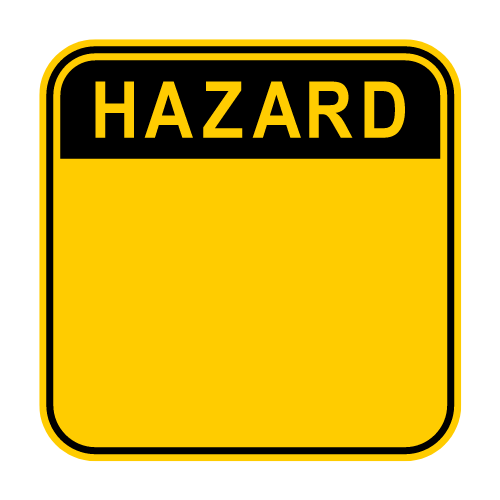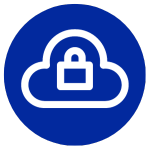1. Breaking Down Departmental Silos Many organizations operate in a siloed manner, where each department functions independently with little cross-departmental interaction. This approach can hinder the effective implementation of a QMS, as quality management should be an organization-wide initiative. Strategy: Encourage cross-departmental collaboration and communication. Foster a culture where quality management is everyone's responsibility, from the CEO to the maintenance crew. 2. Embracing Technological Innovation Resistance to technological change can create significant barriers to effective QMS implementation. Employees and managers may view the adoption of new technologies as additional burdens on resources and time. Strategy: Promote a culture of continuous learning and innovation. Provide training and support to help employees adapt to new technologies and understand their benefits. 3. Allocating Adequate Resources Some organizations may be hesitant to allocate resources towards QMS implementation, viewing it as a drain on their budget and time. However, the long-term benefits of a well-implemented QMS far outweigh the initial investment. Strategy: Secure executive buy-in to ensure adequate resources are allocated for QMS implementation. Highlight the long-term benefits of a robust QMS, such as improved efficiency, reduced errors, and enhanced compliance. 4. Managing Complex Supply Chains Globalization has led to more complex supply chains, which can complicate quality management. Organizations must ensure quality control at every stage of the supply chain, which can be challenging when dealing with suppliers around the world. Strategy: Accupoint’s robust supply chain management modules ensure visibility and control over your entire supply chain. Regularly audit suppliers to ensure they meet your quality standards. 5. Ensuring Effective Data Migration Transferring data from existing systems to the new QMS can be a complex and error-prone process. Data inconsistencies, inaccuracies, and loss of information can occur if the migration is not properly managed. Strategy: Accupoint can assist in the development of a detailed data migration plan to ensure data accuracy and consistency. 6. Customizing the QMS to Suit Your Needs Every organization has unique processes and requirements. A one-size-fits-all QMS may not align with your specific needs, leading to inefficiencies and user dissatisfaction. Strategy: Accupoint’s QMS platforms are designed to be industry specific and customizable to your organization's needs. Tailor the system to align with your workflows, enhance the user experience, and maximize ROI. 7. Ensuring Continuous Monitoring and Improvement Implementing a QMS is not a one-time endeavor. Organizations must continuously monitor and improve their QMS to ensure it remains effective and relevant. Strategy: With Accupoint Software, you can conduct regular audits and assessments to identify areas for improvement. Foster a culture of continuous improvement to ensure long-term success. 8. Providing Ongoing Support and Maintenance Once the QMS is implemented, organizations must be prepared for ongoing support and maintenance. This includes running system updates, routine maintenance, and providing user support. Strategy: Accupoint provides comprehensive on-boarding and support, including workspace updates, daily back-ups, server management, system maintenance, and standards monitoring service. The Accupoint DifferenceAccupoint Software's support team is dedicated to helping organizations overcome these challenges and achieve rapid return on investment. Our team provides comprehensive support throughout the QMS implementation process, including planning, customization, data migration, integration, testing, and ongoing maintenance.
We understand the complexities and challenges of QMS implementation and are committed to making the process as smooth and efficient as possible. Our team is always available to provide support and guidance, ensuring your organization can harness the full potential of your QMS. If you're ready to overcome the challenges of QMS implementation and reap the benefits of a robust and efficient quality management system, we invite you to book a Discovery Session with us. We look forward to discussing your needs and exploring how we can help you achieve your compliance management goals.
Today, let's delve into how OpLink streamlines document management in accordance with the ISO 9001:2015 standard.
Centralized Document Repository One of the primary challenges in complying with ISO 9001 is the management of documentation across various departments and processes. OpLink offers a centralized repository where all relevant documents, including policies, procedures, work instructions, and records, are stored in a structured and accessible manner. This eliminates the chaos associated with scattered documents, ensuring that everyone within the organization has access to the most up-to-date information. Version Control and Document History Maintaining version control and tracking document history is crucial for ISO 9001 compliance. OpLink provides robust version control capabilities, allowing users to track changes, revisions, and approvals seamlessly. This ensures that only the latest authorized versions of documents are used, minimizing the risk of outdated or incorrect information impacting operations. Automated Workflows and Notifications Compliance with ISO 9001 often involves adhering to predefined processes and workflows. OpLink empowers organizations to automate these workflows, streamlining document approval, review, and distribution processes. Automated notifications keep stakeholders informed about pending tasks, deadlines, and changes, promoting accountability and transparency throughout the document lifecycle. Document Security and Access Control Security is paramount when managing sensitive documents, especially in regulated industries. OpLink offers robust security features, including role-based access control, encryption, and audit trails, to safeguard confidential information and ensure compliance with data protection regulations. Real-time Reporting and Analytics Monitoring and measuring compliance performance is essential for continuous improvement. OpLink offers robust reporting and analytics capabilities, providing real-time insights into document status, compliance metrics, and trends. This data empowers management to make informed decisions, identify areas for improvement, and drive proactive actions to maintain ISO 9001 certification. The OpLink platform stands as a comprehensive solution for tackling the intricacies of ISO 9001 compliance. With its centralized document repository, version control, automated workflows, stringent security measures, and real-time reporting capabilities, OpLink streamlines document management, ensuring adherence to ISO standards with efficiency and ease. Ready to elevate your organization's compliance efforts and streamline document management? Take the next step towards ISO 9001 excellence by scheduling your platform demo today! Navigating Supplier Relationships: Understanding Critical Suppliers in API Specification Q1 Standard3/4/2024
Within this framework, the identification of critical suppliers holds significant importance, ensuring that the products and services provided meet the stringent requirements of the industry. In this blog post, we delve into the nuances of identifying critical suppliers as defined in the API Specification Q1 standard.
Understanding API Specification Q1 API Specification Q1 is a quality management system standard designed specifically for organizations within the petroleum and natural gas industry. It outlines the requirements for the design, development, production, installation, and servicing of products and services. Adherence to this standard ensures that companies maintain consistent quality, safety, and reliability throughout their operations. Defining Critical Suppliers Critical suppliers, as defined in API Specification Q1, are those whose performance directly impacts the quality, safety, and reliability of the final product or service. Identifying critical suppliers is a crucial aspect of risk management within the supply chain, as failures or deficiencies in their products or services can have significant consequences for the organization and its stakeholders. Key Criteria for Identifying Critical Suppliers
Implementing Effective Supplier Management Practices Once critical suppliers have been identified, it is essential to establish a robust supplier management process to mitigate risks and ensure ongoing compliance. The process should include:
In the highly regulated world of oil and gas, the identification and management of critical suppliers are essential components of ensuring product quality, safety, and reliability. By adhering to the guidelines outlined in API Specification Q1 and implementing effective supplier management practices, organizations can strengthen their supply chain and maintain a competitive edge in the market. For more information on how Accupoint Software can help manage your critical suppliers and improve supply chain management, we invite you to schedule a discovery session today.
Understanding the Basics of Hazard Analysis:
Steps to Building an Effective Hazard Analysis Program:
Optimizing Your Hazard Analysis Program:
Investing in an effective Hazard Analysis Program is an investment in the well-being of your workforce and the success of your business. By identifying, prioritizing, and mitigating potential hazards, you create a safer, more productive workplace. Follow these steps to build a program that not only meets regulatory requirements but also fosters a culture of safety and continuous improvement. To learn more about how Accupoint can help streamline your Hazard Analysis Program, contact us today to arrange a personalized demo of the platform.
Use Strong, Unique Passwords One of the fundamental principles of password security is to use strong, unique passwords for each online account. A strong password typically includes a combination of upper and lower-case letters, numbers, and special characters. It should be at least 12 characters long. Avoid using easily guessable information such as names, birthdates, or common words. Enable Two-Factor Authentication (2FA) Two-factor authentication is an extra layer of security that requires you to provide a second form of verification in addition to your password. This could be a text message code, a mobile app, or a hardware token. Enabling 2FA significantly enhances your account's security by making it much harder for malicious actors to gain unauthorized access. Password Manager With the multitude of online accounts we manage, it's nearly impossible to remember strong, unique passwords for each one. This is where a password manager comes to the rescue. Password managers generate and store complex passwords, making it easy to access them when needed. They also autofill login information, reducing the risk of falling victim to phishing attacks. Regularly Update Passwords It's good practice to update your passwords regularly, particularly for critical accounts like email and online banking. Hackers may obtain your old passwords from data breaches and attempt to reuse them. Set a reminder to change your passwords every three to six months to stay ahead of potential threats. Don't Share or Reuse Passwords Sharing passwords with others, even with trusted individuals, is generally discouraged. Each person should have their own unique login credentials. Additionally, avoid using the same password for multiple accounts, as a breach of one account could jeopardize the security of others. Educate Yourself and Stay Informed As cybersecurity threats evolve, it's crucial to stay informed about the latest security best practices and emerging threats. Follow reputable cybersecurity blogs, news sources, and official guidance from organizations to stay up-to-date on the latest trends in password security. Password best practices are an essential component of maintaining your online security. By following these guidelines, you can significantly reduce the risk of falling victim to cyberattacks and data breaches. Remember, a strong and unique password is your first line of defense against digital threats, so take the time to protect your digital world.
|
Archives
May 2024
|






